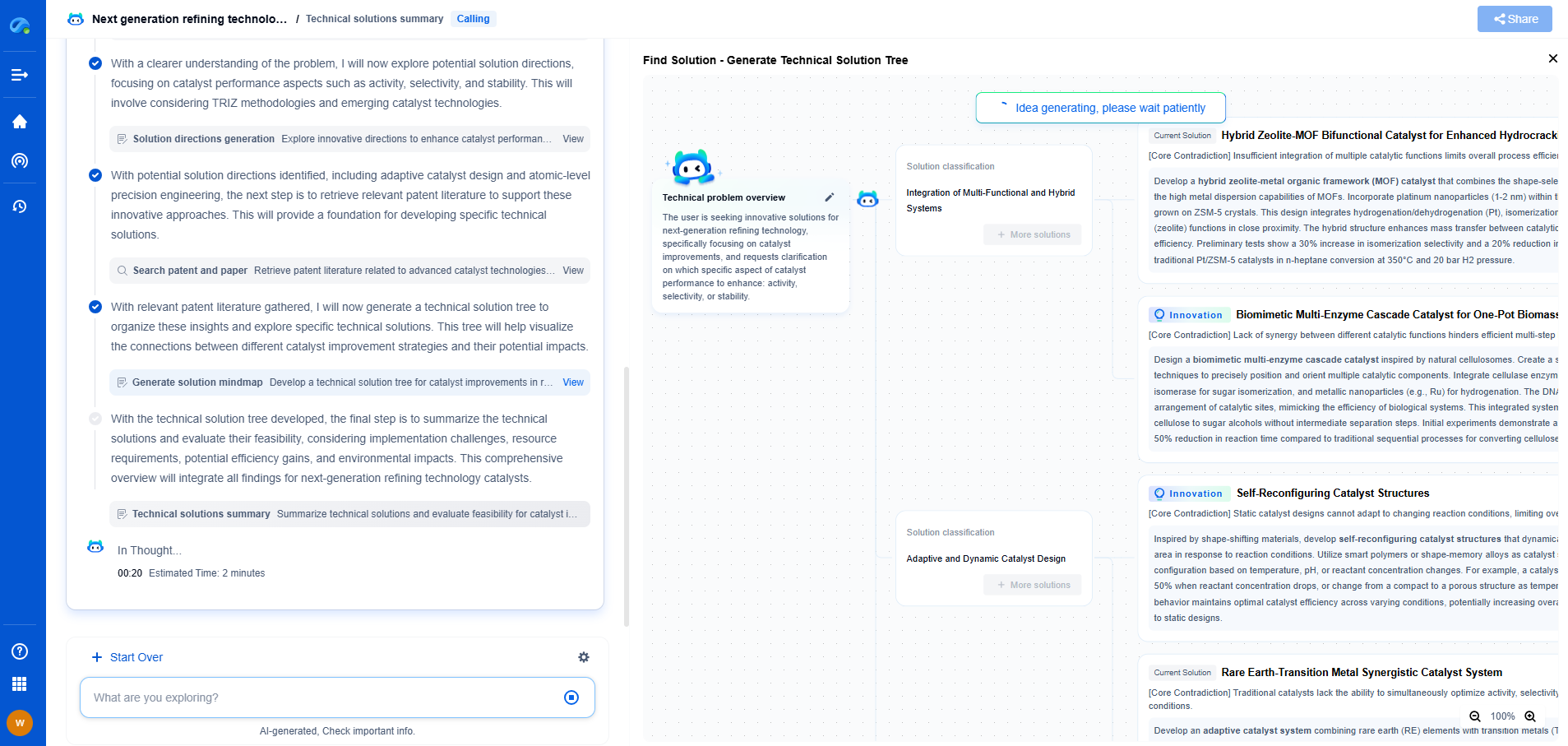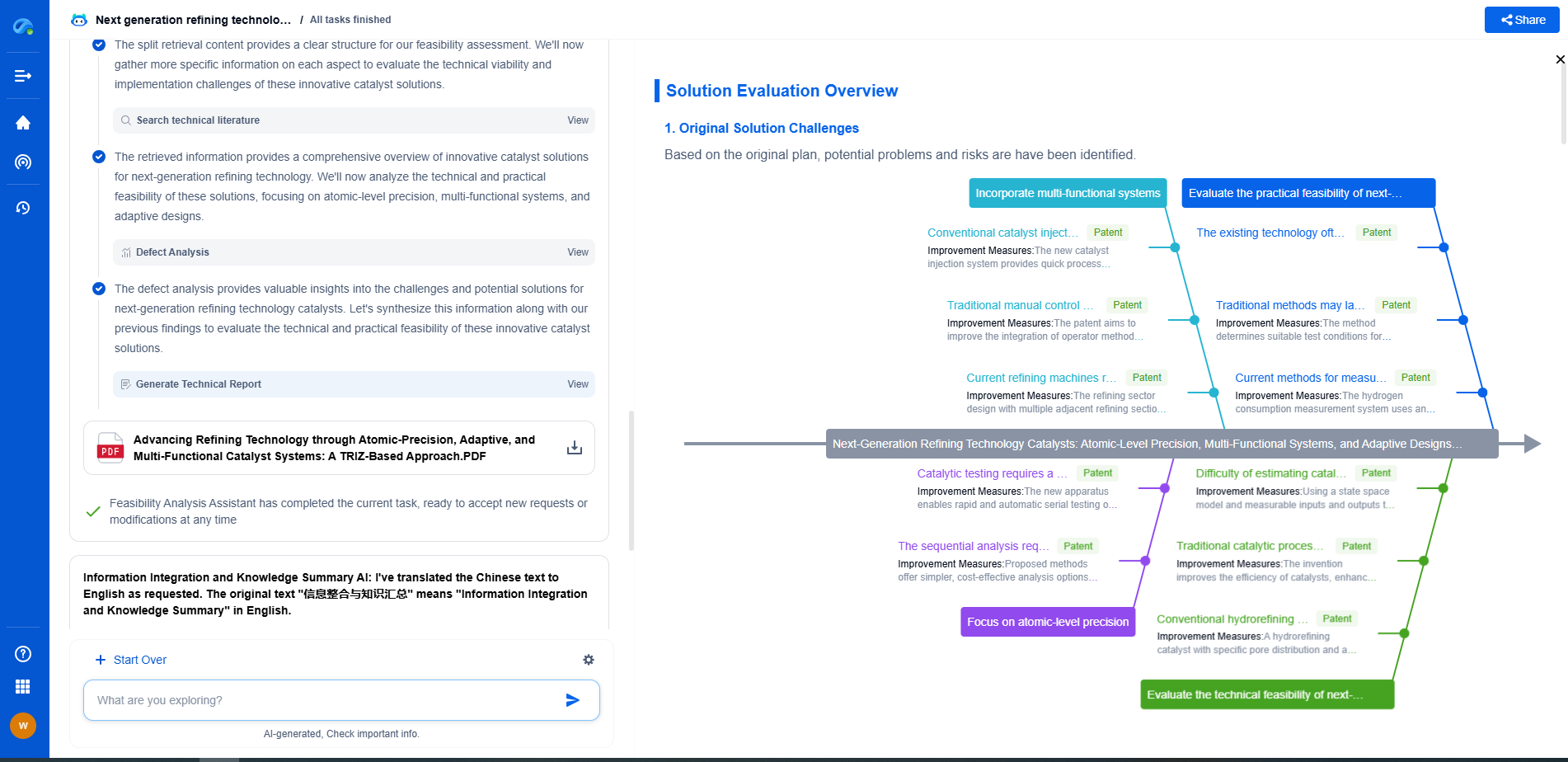What every petroleum engineer should know about unconventional drilling
JUN 20, 2025 |
Unconventional drilling has revolutionized the oil and gas industry by allowing access to resources that were previously deemed uneconomical or technically challenging to extract. As a petroleum engineer, understanding the intricacies of unconventional drilling is crucial for maximizing the potential of these resources. Unconventional drilling typically refers to methods used to extract oil and gas from unconventional reservoirs, such as shale formations, tight sandstones, and coal beds. Unlike conventional reservoirs, unconventional ones have low permeability, requiring advanced techniques for extraction.
Key Techniques in Unconventional Drilling
One of the most notable techniques in unconventional drilling is hydraulic fracturing, or "fracking." This process involves the injection of high-pressure fluid into the reservoir rock to create fractures, which enhances the flow of oil or gas. Another vital technique is horizontal drilling, where wells are drilled laterally to expose more of the reservoir rock to the wellbore, significantly increasing the area of extraction compared to traditional vertical wells. Mastery of these techniques is essential for any petroleum engineer engaged in unconventional drilling projects.
The Role of Technology and Innovation
Technological advancements have played a pivotal role in the success of unconventional drilling. Engineers must stay abreast of the latest technologies, such as advanced drilling rigs, real-time data analytics, and enhanced recovery methods. These innovations not only improve efficiency and reduce costs but also help in minimizing environmental impacts. For instance, the development of environmentally friendly fracturing fluids and improved well completion techniques are critical in addressing public concerns about the ecological footprint of unconventional drilling operations.
Environmental and Regulatory Considerations
Unconventional drilling often faces scrutiny due to its environmental impact, particularly concerning groundwater contamination and induced seismicity. It's imperative for petroleum engineers to be knowledgeable about the best practices to mitigate these risks. This includes understanding proper wellbore integrity measures, effective waste management practices, and adherence to regulatory standards. Being well-versed in the regulatory landscape is also essential, as compliance with environmental laws and regulations is a fundamental aspect of any drilling operation.
Economic Implications and Market Trends
The economics of unconventional drilling can be complex, as the techniques involved are often more costly than conventional methods. Engineers must be adept at evaluating the economic viability of projects, considering factors such as fluctuating oil and gas prices, production rates, and technological efficiencies. Staying informed about market trends and geopolitical dynamics can provide a competitive edge, as these factors significantly impact the viability and success of unconventional drilling endeavors.
Collaboration and Interdisciplinary Approaches
Unconventional drilling projects require a collaborative approach, involving geologists, reservoir engineers, environmental scientists, and regulatory experts. As a petroleum engineer, cultivating interdisciplinary skills and the ability to work effectively within diverse teams is crucial. This collaboration fosters innovation and ensures that all aspects of a project, from geological assessments to environmental management, are meticulously addressed.
Future Prospects and Challenges
The future of unconventional drilling holds both promising opportunities and formidable challenges. With the global demand for energy continuously rising, unconventional resources will play a critical role in meeting this demand. However, challenges such as resource depletion, technological limitations, and environmental concerns persist. Petroleum engineers must be proactive in seeking sustainable solutions, whether through enhanced recovery techniques, carbon capture technologies, or renewable energy integration.
Conclusion
Every petroleum engineer engaged in unconventional drilling should possess a comprehensive understanding of the techniques, technologies, and environmental considerations involved. By continuously learning and adapting to new challenges, engineers can contribute to the responsible and efficient extraction of unconventional reserves, ensuring energy security for the future while minimizing environmental impacts.
Navigating the Complexities of Drilling Innovation? Let AI Do the Heavy Lifting
In an industry where subsurface conditions, materials science, and drilling dynamics evolve rapidly, staying ahead of technical innovation and protecting your intellectual property can be overwhelming.
Patsnap Eureka, our cutting-edge AI assistant, is built for R&D and IP professionals in high-tech industries like drilling technologies. Whether you're optimizing rotary steerable systems, evaluating high-temperature materials, or exploring next-gen automation in directional drilling, Eureka enables real-time analysis of the latest patents, technology landscapes, and competitive movements—all from one intelligent, intuitive platform.
Ready to accelerate your development cycle and make strategic decisions with confidence? Explore Patsnap Eureka today—where smart drilling starts with smarter insights.
- R&D
- Intellectual Property
- Life Sciences
- Materials
- Tech Scout
- Unparalleled Data Quality
- Higher Quality Content
- 60% Fewer Hallucinations
Browse by: Latest US Patents, China's latest patents, Technical Efficacy Thesaurus, Application Domain, Technology Topic, Popular Technical Reports.
© 2025 PatSnap. All rights reserved.Legal|Privacy policy|Modern Slavery Act Transparency Statement|Sitemap|About US| Contact US: help@patsnap.com

